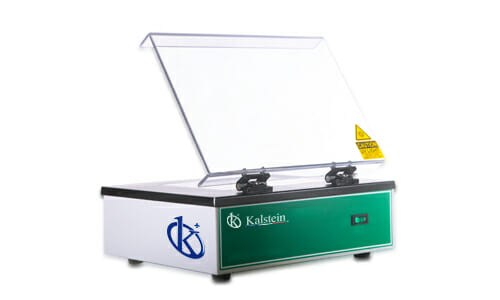Transilluminators, also known as darkfield illuminators, are laboratory equipment that have the potential to significantly change the efficiency of your lab. They are often used in molecular biology experiments to visualize DNA and RNA fragments after performing techniques such as gel electrophoresis. But how exactly does a transilluminator work and how can it improve the operation in your lab?
A transilluminator consists of an ultraviolet light source that illuminates the gel from below. The gels, typically agarose or acrylamide, contain DNA or RNA fragments stained with a fluorescent dye. When these gels are exposed to ultraviolet (UV) light, the fluorescent dyes are excited and emit light at a different wavelength, usually in the visible range. This fluorescence effect produces bright bands representing DNA or RNA fragments, which can be visualized and photographed for further analysis.
The benefits of a transilluminator in your laboratory
Implementing a darkfield illuminator within your laboratory brings with it countless benefits. One of the most notable is the ability to clearly visualize and analyze DNA and RNA fragments. This can increase accuracy in the interpretation of results, allowing the detection of genetic anomalies or genetic diversity, for example.
In addition, this equipment facilitates high-precision work, such as cutting a specific segment of the gel for DNA extractions. This unparalleled level of precision would not be possible without the ultraviolet light emitted by the transilluminator, making this equipment an irreplaceable resource in any modern laboratory.
It is also worth mentioning that contemporary transilluminators have advanced significantly, with many models offering enhanced safety features, such as UV protective filter coatings, and energy-saving features that help minimize energy consumption in the laboratory.
Optimizing workflow with a transilluminator
The use of a transilluminator can also optimize the workflow in the laboratory. These devices, thanks to their compact and ergonomic design, often do not take up much space, allowing for a more efficient use of laboratory space. In addition, the automatic shutdown functions of most of today’s models save time by not having to wait for the equipment to cool down.
Modern molecular biology techniques require highly accurate and reliable equipment. The transilluminator stands out as an indispensable element in any laboratory seeking to maximize the efficiency and throughput of its operations. By providing clear visualization of results and increasing accuracy in analysis, this instrument can make a difference in your lab’s overall results.
The future at Kalstein
As a manufacturer of laboratory equipment, we at Kalstein are pleased to offer you high-end products, with updated design and advanced technology; know our transilluminators HERE, you will find the YR models that are available for your purchase, we also have a new 3D platform that has unlimited versatility, present in more than thirty countries worldwide, publish with us without language restrictions, with shipping plans, be seen, you are more.

